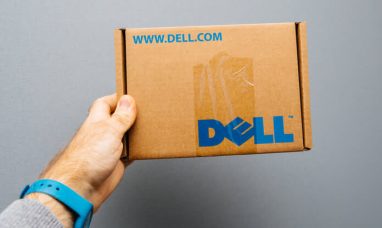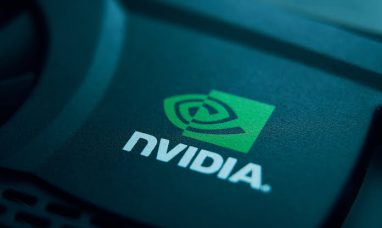Guardforce AI (NASDAQ:GFAI) is a Thailand-based comprehensive security solutions company with 40 years of experience that made its stock market debut roughly 20 months ago. We are not sufficiently affected by this stock, but if you are thinking about taking a stake, here are a few things to consider.
Considerations for Business
While GFAI seeks to present itself as a comprehensive security service provider that protects all types of high-value assets for both public and private sector entities (see image below for significant clients), its roots are in cash solutions, cash management, and cash logistics. Aside from cash expertise, GFAI also provides standard services like security alarm system installations, smart shop management systems (for merchants), and other information security products (such as online, mobile, API penetration test, network infrastructure tests, and so on).
In the next stage of its growth cycle (and what we believe will entice investors to this story), GFAI intends to utilize its foundation and incorporate AI and robotics offerings, thereby providing numerous revenue streams to its existing client base.
Management feels that there is significant potential for AI and RaaS (Robot-as-a-Service) acceptance in entry-level servicing roles in the hospitality, entertainment, tourism, and real estate industries, which are typified by labor shortages, high labor costs, and non-standardized servicing standards. If RaaS gains traction, it also helps change the revenue texture to a recurring-revenue-based model, which is more likely to be accepted. GFAI is also quite enthusiastic about its “AIoT” Robot advertising strategy, but if it is only obtaining contracts of less than 6 months in length, that is plainly nothing to write home about.
Even though some investors may be excited about the prospects of RaaS penetration across various industries (the services robotics market is expected to grow at a CAGR of 15%), they should keep in mind that the GFAI story is currently being driven primarily by what’s happening on the traditional side of the portfolio; for example, less than 3% of the $35.5m in pro forma revenue generated last year came from Robotics and AI, with the rest coming from traditional avenues. Given the massive tilt, don’t expect a significant movement in the income mix very soon.
Worryingly, GFAI’s largest contributor to group revenue-secured logistics (90% of group revenue) has seen declining revenue growth (down by 10% YoY in FY22, but largely due to the trajectory of the Thai baht; nonetheless, revenues were still trending lower YoY even on an FX-adjusted basis).
Management attributes this weakness to COVID disruptions and the closure of certain customer facilities, but even if one assumes a rebound in the coming quarters, it’s difficult to see this business putting up growth rates that would whet your appetite; for context, Freedonia Group believes that the traditional security services market will likely grow at 4% through FY26. Indeed, YCharts revenue projections for GFAI show a figure of $37m for FY23, representing a 4% yearly revenue growth.
Considerations Concerning the Stock
Given GFAI’s low growth cadence, it’s no surprise that the stock is currently trading at a price-to-sales multiple of less than 1x; more specifically, based on FY23 estimates, you’re looking at a multiple of 0.63x, a 27% premium over the stock’s trading history average multiple (0.495x).
Also, the GFAI stock has been a source of wealth destruction since its debut in late September 2021; admittedly, most micro-caps have had a rough 1-2 years (the iShares Micro-Cap ETF is down by -27% since GFAI’s listing date), but GFAI has fared much worse, losing -97% of its market-cap since its debut.
Not only is the magnitude of losses concerning, but it’s also fair to say that GFAI isn’t a stock for the faint of heart, as its volatility profile has skyrocketed over time. On an annualized basis, the standard deviation of its monthly returns is currently trading at more than 83% (this is a lingering issue, as the GFAI stock’s average standard deviation has been relatively high at 51%).
Owners of GFAI shares will almost certainly face a slew of dilution issues. Regardless of how appealing the end markets appear, you’re looking at a young industrial company that will squander a lot of cash throughout this stage of the lifecycle. For background, between FY21 and FY22, cash on books fell by 48% and now accounts for only 13% of the asset base at $8.2m (note that this figure includes restricted cash, which further constrains them). To supplement its capital resources, GFAI will issue public offerings from time to time (for example, in the first week of May, they tapped the markets and raised $9 million, followed by another offering 10 days later for $14 million). In effect, investors should be prepared to deal with considerable changes in outstanding shares.
Nonetheless, given the long-term trend of price erosion, the heightened volatility profile, and the dilution risks, some of you may be hesitant to get on board with GFAI, but we also recognize that there may be a fair few who are wondering if now is a good time to consider a position from a trading standpoint.
To the latter group, we’d say the stock has been leaving price imprints in the shape of a falling wedge, with the price action leveling out since May. Meanwhile, the average true range (ATR) of GFAI’s weekly prices appeared to have decreased in recent periods. If you’re considering a long position using the two boundaries as guideposts, we believe the risk-reward ratio appears positive from a technical standpoint.
However, investors should be aware that this is a company that has frequently found it difficult to comply with Nasdaq listing agreements, and they were also forced to do a 1-40 reverse stock split earlier this year, which does not bode well for trading and liquidity.
Furthermore, as stated previously in the essay, the narrative is now dominated by simple vanilla offers in security services, which does not bode well. Overall, we are not sure that GFAI is compelling enough to be explored at this time.
Featured Image: Freepik @ freepik








